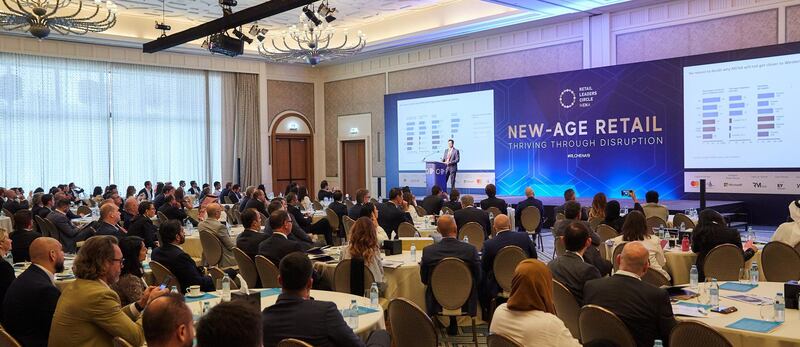Middle East consumers are ahead of global percentages in terms of shopping on Amazon, buying groceries online, shopping by smartphone and using digital payments.
Shopping with Amazon has increased from 52 per cent to 76 per cent regionally, in comparison to 65 per cent globally, said the latest annual Global Consumer Insights Survey from PwC unveiled at the Retail Leaders Circle Mena conference in Dubai on Tuesday. The report surveyed 20,000 global consumers, including 1,004 from the region (covering the UAE, Saudi Arabia and Egypt).
“It shows that regional consumers are savvy and quick adopters of trends - and the retail market has to adopt very fast,” said Norma Taki, consumer markets leader at PwC Middle East.
Nearly a quarter of Middle East consumers use Amazon exclusively for online purchases, compared to 12 per cent globally.
Close to 75 per cent of regional consumers said they are likely to buy their groceries online, compared to 58 per cent last year and 50 per cent globally.
While in-store shopping still remains the shopping channel of choice in the Middle East at 54 per cent, smartphone shopping is at 33 per cent. Globally, in-store shopping hits 49 per cent and smartphone shopping 24 per cent.
Middle East customers have also increased their use of mobile payment options, such as Apple Pay and Google Wallet, from 25 per cent to 45 per cent in this year’s survey, compared to 34 per cent globally.
Data from McKinsey shows that Middle East consumers are increasing their spending online, while becoming more price conscious and less brand loyal, according to its bi-annual consumer sentiment survey to be released next month.
"Between 2015 and today, 40 per cent more consumers [in the UAE and KSA] are more price conscious," Abdellah Iftahy, McKinsey partner and leader of its consumer and retail practice in the Middle East, told The National.
“Consumers now have access to much more transparent prices across the categories, so they’re able now to compare prices online to prices offline … which was not the case four years ago.”
In terms of brand loyalty, “two times more consumers than in 2015 have switched to a less expensive brand or a private label,” said Mr Iftahy.
In the UAE specifically, 49 per cent of consumers said they are more price conscious in 2018, compared to 35 per cent in 2015, according to the McKinsey data shared at the Retail Leaders Circle conference. Nearly 20 per cent said they are less brand loyal, compared to 8 per cent in 2015. Around 30 per cent said they are increasing their spending online, compared to 10 per cent in 2015.
Brick-and-mortar retailers are adapting by increasing promotions, leveraging digital technologies and enhancing the customer experience through collecting more data.
“Grocery retailers have seen their promo weight, which is the share of sales coming from promotions, grow significantly in the last three years. In some categories, the [promo weight] has gone from 30 per cent to 60 per cent,” said Mr Iftahy. “So it’s almost like the new name of the game is 'everything is promoted'.”
Some retailers are trying to provide the same convenience as digital. For example, Carrefour offers valet trolley, where customers can shop in store but have the items delivered to their door, and scan-and-go, where customers can scan items themselves instead of standing in a queue, Mr Iftahy said.
Ahmed Ismail, chief executive of Majid Al-Futtaim Properties, said collecting more consumer data and co-operation between shopping malls and retailers are the keys to success for traditional retailers.
“The challenge for us is, unlike our digital competitors, we do not have as much data as they do about what consumers are browsing, what they’re buying,” said Mr Ismail, speaking at the conference about the future of distribution in the GCC. “So it’s not just about how much space and how much revenue, it’s about data exchange, about co-marketing, co-creation, co-promotion.”
While online competitors can be a threat, Mr Ismail emphasised the need to focus on ways to cater to the “very demanding and uncompromising customer” when it comes to experience and fairness in terms of price transparency.
“These trends are not just here to stay, but will actually accelerate going forward,” Mr Ismail said.
“You can get obsessed by not losing to Amazon and forgetting how to win, so we are focused on winning,” he added.








